
Tick Talk
[Vacheron Moderator]
2195

Vacheron's Amazing Aluminum Watch
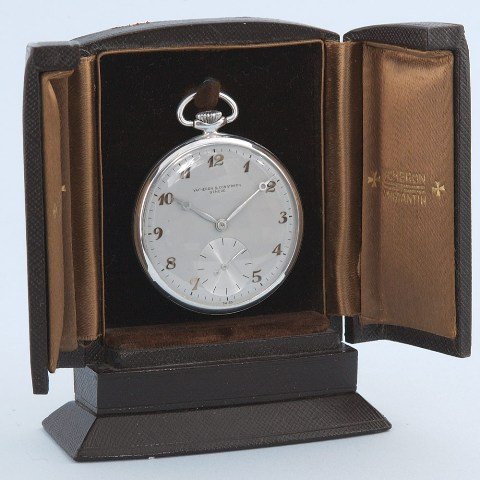
The acquisition of a new watch is always an exciting moment, and this one is all the more so for several reasons. Firstly, it is a Vacheron & Constantin and my first pocket watch. Secondly, it has a very special Canadian connection between a mining resource company, a historic Montreal jeweller, and a deserving gentleman named Armand Lefebvre. Lastly, it involves a mystery…and I love a good mystery.
Before introducing the watch, let me first share some history as told in Antiquorum’s ‘The Quarter Millennium of Vacheron Constantin’ 2005 auction catalogue:
The Vacheron & Constantin aluminum watch was conceived in 1937 upon request by Henry Banks (sic) of Montreal, a Vacheron Constantin agent, on behalf of the Canadian Aluminum Limited group of companies. This watch was to mark 25 years of continuous service within the Aluminum group. The watch was intended to “have real value, originality and at the same time, serve as a reminder of the great aluminum industry”.
Numerous experiments were carried out to find a suitable alloy that could be machined to tolerances of 1/100mm, which are required in the manufacture of watches. Upon producing a prototype, the case, dial hands, bridges and plates of which were made of aluminum, and the balance, springs, wheels and pivots of traditional materials, Vacheron & Constantin submitted the watch for testing. These tests showed that the new watch was comparable to other watches in its category which utilized traditional materials throughout the movement, in so far as precision was concerned. In 1938 Vacheron & Constantin delivered the first of its aluminum watches. The watch weighed a total of 19.61 grams (0.69oz) – somehow appropriate for a quarter-century watch – it weighed approximately a quarter as much as a similar sized gold watch. By April of 1950 Vacheron & Constantin had delivered only 271 examples of these watches.

Aluminum case and dial
The purpose of this exercise was not, at the time, to show aluminum as a new watchmaking material. However, in recent years aluminum had to become a mainstay of the watchmaking industry; its non-ferrous, antimagnetic qualities are strong advantages in the field of horology, as is its lightness.

Aluminum movement components
Additional:
Further examples were completed unadorned or as presentation pieces at least until 1955. Evidence of this was presented at Antiquorum’s 1994 Art of Vacheron Constantin sale, where lot 131 featured case no. 347833, a non-presentation model completed in 1955.
By way of comparison with another special order, Vacheron & Constantin delivered a total of 3,287 pocket watches to the U.S. Army Corps. of Engineers during 1918-1919.

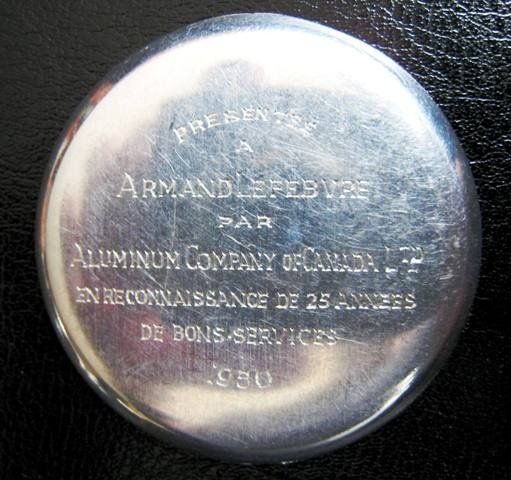
This Watch:
Vacheron & Constantin movement No. 482128, case No. 307875, Reference 4348 keyless aluminum dress watch, made for the Aluminum Company of Canada Ltd. and presented to Armand Lefebvre in 1950.
- Three-piece, “bassine”, polished and matted 44mm case with presentation engraving on the back. Matte aluminum dial with applied polished aluminum Breguet numerals, outer minute track, subsidiary seconds. Polished gilt aluminum Breguet hands.
- Calibre V439 aluminum movement, “fausses cotes” decoration, 17 jewels, straight line lever escapement, cut bimetallic compensation balance adjusted to temperature, Breguet balance-spring, swan-neck micrometer regulator.
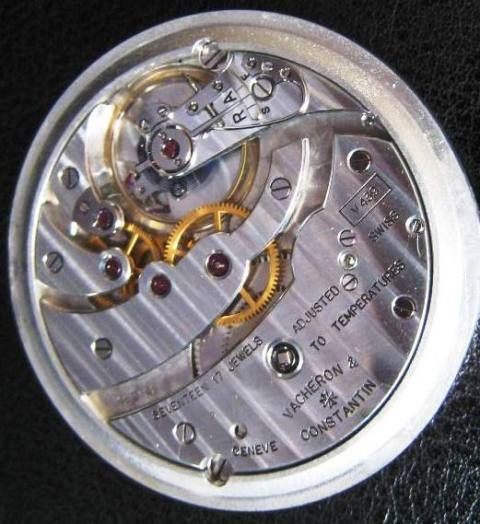

Comments:
Antiquorum’s ‘The Art of Vacheron Constantin’ 1994 auction catalogue lists two examples of “anticorodal” aluminum watches under lots 130 and 131. The description states;
Production of a limited series of aluminium dress watches, as a study to anticipate the shortage of strategic material which could have occurred during World War II. The choice of aluminium was an alternative to other metals such as stainless steel, brass, copper, nickel or precious metals.
While Antiquorum refutes this statement in their later 2005 Vacheron auction catalogue, there must have been some benefit derived from the research conducted to produce an alloy capable of fine-machining. When this work was commissioned in 1937, the Spanish Civil War was raging and the Japanese had invaded China. The fascists were on the rise in Europe and war was looking inevitable. The Germans had developed Duralumin and the allies had nothing like it. In 1939, the president of Reynolds Metals travelled to Germany and saw first-hand the build-up for war. Upon his return to the U.S. he testified before a Senate committee which led to a tremendous increase in aluminum production as a strategic material. One can only wonder if this little project contributed in some manner.
Franco Cologni’s book, Secrets of Vacheron Constantin, states the following on pg. 152;
With the return of peace came new opportunities for Vacheron Constantin. Georges Ketterer, who had replaced Paul Lebet on the board following his death in July (1945), seized every opportunity and gave full encouragement to creativity and imagination on the part of the firm’s watchmakers. Thus the post-war years saw the appearance of a number of watches of breathtaking audacity, born of this newly rediscovered freedom. An aluminum watch, for example, formed an extraordinary tribute to this new era. Yet it was simply a response to a bizarre request from the biggest manufacturer of this common component of weapons who, abruptly deprived of outlets, sought new uses that were at once peaceful and more prestigious. Vacheron Constantin was the only watchmaker to rise to the challenge, creating one of the lightest pocket watches every made, weighing a mere 19.61 grams (0.69 ounces), or less than half the weight of its equivalent in gold or silver. Case, dial, and virtually the entire movement were in aluminum (ill. p.148-149 shows Aluminum Company of Canada 25 year presentation watch).
Sales evidence confirms that the production of Vacheron’s aluminum watches pre-dates Cologni’s version (lot 130, 1994 Art of Vacheron Constantin sale, case No. 265188, completed in December 1939) while supporting Antiquorum’s 2005 catalogue description. Furthermore, Cologni’s suggestion that the Aluminum Company of Canada was seeking a “prestigious” application for their product fails to account for the influence of the Montreal jeweller that arranged this amazing partnership.
The Birks family immigrated to Montreal from Yorkshire, England, in 1832, bringing their wealth and a history of manufacturing cutlery for British royalty and the upper classes since the sixteenth century. Henry Birks was born in 1841. He apprenticed with the top jewellers of the pre-confederation Province of Canada, Savage & Lyman, at the age of 17. He soon became a buyer and travelled to Europe on behalf of the firm, rising to full partner by 1868. Undoubtedly it was during this period he discovered the horological excellence of Swiss watchmakers. Henry went on to establish his own store in 1879 and, in partnership with his three sons, founded Henry Birks & Sons in 1893. Often referred to as the Tiffany’s of the North, they had a long association with Vacheron & Constantin, retailing the Swiss brand and also casing Vacheron movements under the Birks label. When commissioned by the Aluminum Company of Canada, it would have been completely understandable that Vacheron & Constantin came to mind as their manufacture of choice.
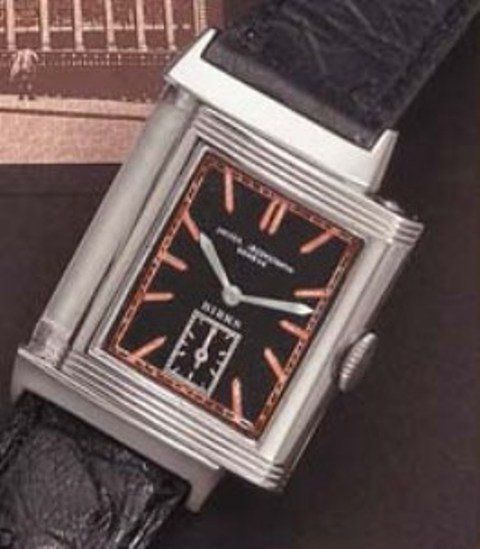 Extremely rare Vacheron 1934 "Reversible" wristwatch produced for Birks
Extremely rare Vacheron 1934 "Reversible" wristwatch produced for Birks
Birks absorbed several luxury jewellery stores as they expanded west, beginning with Ottawa in 1901. These new acquisitions only served to strengthen their ties with Vacheron & Constantin. Ryrie Brothers was a prominent jewellery business in Toronto. James Ryrie had apprenticed to John Segsworth in Toronto in 1870 and opened his own business as early as 1879. The name became Ryrie Brothers in 1897 when Harry joined the firm. Ryrie Brothers amalgamated with Henry Birks & Sons in 1917. Another Toronto jeweller, Ellis Brothers, was founded in 1903. For a time they were the exclusive agents for Vacheron & Constantin in Canada. In 1933 they amalgamated with Ryrie Birks to become Birks Ellis Ryrie, advertising themselves as Canada’s Largest Jewellery Store.


Toronto Globe & Mail, 1922 Toronto Globe & Mail, 1933
In Winnipeg, Scottish émigré Donald Ross Dingwall opened a jewellery shop in 1882 following his apprenticeship as a watchmaker in Montreal. D. R. Dingwall became the city’s most important jewellers and featured Vacheron & Constantin pocket watches under their own label. Upon D. R.’s death in 1913, the business continued under his son Donald Waverley. D. R. Dingwall was taken over by Henry Birks & Sons in about 1919 and renamed Birks-Dingwall. Other well-known Canadian jewellery and watch retailers that were absorbed by Birks included D.E. Black of Calgary and O.B. Alan of Vancouver.
Henry Birks died in his beloved Montreal in 1928, to be succeeded by his son William, then William’s son Henry. After five successive generations of family management, Henry Birks & Sons was acquired by the Italian Regaluxe Investment group in 1993. The Tiffany comparison was given further credibility with the appointment of Thomas Andruskevich as President and Chief Executive Officer in 1996. Mr. Andruskevich served with Tiffany & Co. from 1982 to 1994 in several capacities including Senior Vice President and CFO. The company took controlling interest in the U.S. jewellery chain Mayor’s in 2002.
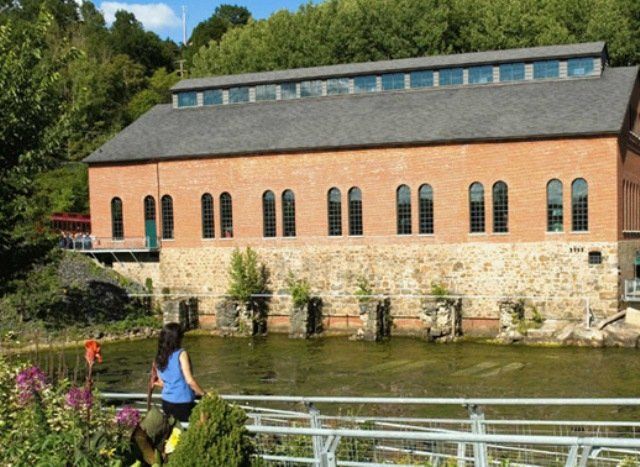
Northern Aluminum Company restored power plant, Shawinigan, Quebec
Some mention of the Aluminum Company of Canada is also appropriate to our story. Founded in 1902 at Shawinigan, Quebec, as a subsidiary of the Pittsburgh Reduction Company (later the Aluminum Company of America) the company was first chartered as the Northern Aluminum Company then renamed the Aluminum Company of Canada in 1925. The company became independent in 1928 and registered the trade name Alcan in 1945. In 2007, Alcan merged with the Anglo-Australian mining conglomerate Rio Tinto to create Rio Tinto Alcan; the world’s largest aluminum company and still headquartered in Montreal.
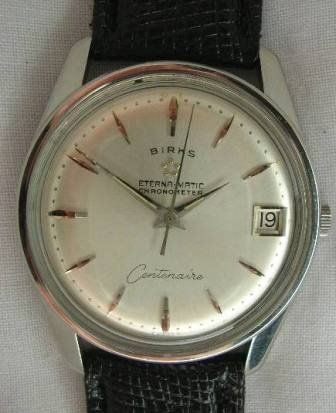

The mystery alluded to at the beginning of this story remains, however. Who was Armand Lefebvre I still wonder, and what is his story? Enquiries have been made and replies are hoped for. Let’s keep in touch!
Dean aka Tick-Talk
December, 2008
Photo Credits:
1. Pieces of Time website
2./3. Vacheron Constantin archives, as published in High Society-The History of America’s Upper Class by Nick Foulkes (Assouline) pg. iii, iv.
4./5./6./7. Author
8. Antiquorum Online Database for 12 October 2003 sale
9./10. Globe & Mail newspaper archives
11. Heritage Shawinigan website
12./13. Finer Times website
This message has been edited by tick-talk on 2008-12-21 22:10:45

Vacheron's Amazing Aluminum Watch

Dear Dean thank you for great post

Thank you for this post, Dean...

Woww...Vacheron Reverso??

Don't forget that VC and JLC were very, very close during the early-mid 20th C.

That is worth a story too!
alcan Vacheron Constantin needle


